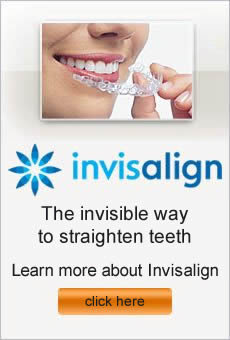If you wear braces on your teeth, there’s a chance that you will be one of the many orthodontic patients who must wear rubber bands as part of their treatment. They play an important role in achieving a perfect smile.
How do rubber bands help?
Braces by themselves only move teeth along the upper or lower sets of teeth, but rubber bands apply constant pressure to move the lower jaw and upper jaw into proper alignment with each other. The goal of rubber bands is to achieve a perfect bite. Repairing the bite is often the longest and most difficult phase of the orthodontic process, but rubber bands help move your jaw into the correct position more quickly. The way that the bands are attached to the braces is customized to each patient to direct tension in the best way for you.
How much should I wear them?
Orthodontists recommend that you wear rubber bands all day, removing them only to brush, floss, replace with new bands, or occasionally to eat. Most of the time you should eat with them in place, as it is helpful for your mouth to learn to work with that tension. Rubber bands should be worn when sleeping and playing sports. Leaving them off for even just one day can erase progress you’ve made.
Will I get used to them?
It takes a few days to learn to take the rubber bands in and out, but after some practice it becomes simple. It’s normal for your teeth, jaws, and mouth to be a bit sore at first, but that goes away. However, if you do not wear your rubber bands consistently, you will have constant discomfort because your mouth won’t get used to them.
What if I don’t wear them consistently?
To achieve the best orthodontic results in the shortest amount of time, you must be committed to wearing your rubber bands as your orthodontist has recommended. Wearing them intermittently will negatively affect your progress, so it’s vital to wear them full time.
Pacifiers have been used by parents for many years to soothe babies, who are born with a strong sucking reflex and find security in the pacifier. It is a normal part of development, but parents often wonder how long it is appropriate to allow their child to suck on a pacifier. One of the concerns is that it can negatively affect a child’s dental health. Here are some things to consider about long-term pacifier use.
Age
Most children stop sucking on pacifiers between the ages of two and four. Pacifier use after age four may lead to dental problems, with the risk becoming greater the older the child becomes.
Teeth
Dentists say that older children who use pacifiers have increased risk of protruding front teeth, described as teeth that slant outward. Also, the bottom front teeth may tilt in. Longer pacifier use can delay losing the front baby teeth at a normal time, and may postpone the emergence of permanent teeth.
Jaw alignment
Prolonged pacifier use may increase the risk of an improper bite. Often this means narrowing of the upper jaw compared to the lower jaw, which is commonly called a cross bite. Another common effect is an open bite, which is a gap between the upper and lower front teeth when the mouth is closed. Also, there is an increase of overjet, described as a horizontal projection of the upper teeth past the lower teeth.
Correcting problems
For many children, the effects of prolonged pacifier use is self-correcting, but only if the child stops using a pacifier before the permanent teeth emerge. Orthodontists say that teeth tend to go back to their ideal positions if the habit stops before the adult teeth come in. However, some of the more severe outcomes such as cross bite do not correct on their own. Orthodontists can use a variety of appliances to coax the teeth and jaw into proper alignment.
If you or your child needs orthodontic treatment, you may feel slightly overwhelmed by the details and terminology. Developing an understanding of the lingo will help you feel more comfortable with the process. After performing a thorough exam and evaluation, your orthodontist will explain treatment recommendations.
Some of the common orthodontic terms you may hear include:
Archwire
Designed to provide a guide for your teeth as they move, an archwire metal wire that attaches to the brackets. Your orthodontist will change the archwire periodically during treatment.
Brackets
A ceramic or metal piece cemented to the front of your teeth and used to hold the archwire in place.
Cross bite
Also called an under bite, a cross bite occurs when the lower teeth overlap with the upper teeth, which can cause gum recession and uneven tooth wear.
Expander
Often used before braces, an expander is an appliance used to make your jaw bigger.
Ligation
The process of attaching the archwire to your brackets.
Malocclusion
A misalignment or issue with the teeth and the way the upper and lower teeth fit together.
Orthodontics
The dental specialty dealing with preventing and correcting irregularities with the teeth. To be accredited as an orthodontist, a dentist must complete two to three years of post-graduate training after dental school.
Spacer
The small rubber device used to produce space between teeth so that the bands can be placed.
Retainer
Worn after the orthodontist removes your braces, a retainer attaches to the upper and lower teeth to keep them from shifting into the incorrect position. Retainers can be removable or bonded in place.
Often, babies and young children use thumb sucking as a method of self-soothing. While it may not seem like a problem, this habit can create dental issues involving teeth position and bite. One way to curb thumb sucking is placement of a dental crib. This orthodontic appliance can correct the habit and help adjust the position of the teeth.
What is a dental crib?
Cemented behind the upper teeth on the roof of the mouth, a dental crib consists of a half circle of wires connected to supporting bands or rings. The device hinders thumb sucking and makes it less appealing.
What is the process for getting a dental crib?
First, you should schedule an appointment with your orthodontist. Your doctor will examine your child and look for signs of any problems. If your child needs a dental crib, you will return for a second visit so that the orthodontist can take photos, X-rays, and impressions. At the third visit, your doctor will construct the dental crib and place it at the fourth appointment.
How long will my child wear a dental crib?
After placement, front teeth begin to shift in about two weeks. After four to six month, an open bite will close and teeth will straighten. Usually, your orthodontist will leave the device in place for 9 to 12 months to ensure that your child has broken the habit.
When is the best time to place a dental crib?
Ideally, you should have the appliance put in position once the upper front baby teeth become loose, but before the adult teeth have pushed out, which usually occurs around age six.
After you finish orthodontic treatment, you should enjoy a stunning smile. Unfortunately, your teeth will naturally want to shift out of alignment. Most orthodontists have their patients wear retainers as the final phase of orthodontic therapy. These oral appliances work to keep teeth in the desired position.
What types of retainers are available?
At one point, orthodontists only used the plastic and wire retainers. This is still the most common type of retainer. Clear, plastic retainers have recently gained popularity. These devices also work well to keep teeth in place.
How long will I need my retainer?
Initially, you will probably wear your retainer about 22 hours a day. Your orthodontist will monitor your progress and let you know when you can cut the time back. Most patients will wear their retainers for several years after treatment to ensure that teeth don’t shift.
Should I wear my retainer while I play sports?
If your appliance fits well, you can wear the retainer because no risk exists to your teeth; however, the device could fall out and sustain damage. Keep in mind that retainers don’t function as mouth guards, so you still need to wear that appliance to protect your mouth.
How do I care for my retainer?
When you remove the appliance, make sure to gently brush and rinse it before storing the retainer. Always place the retainer in its case when you aren’t wearing the appliance so that it doesn’t get broken. Put the case in safe place, out of reach from young children or family pets.
Orthodontic retainers at Mehdi Fotovat Sherman Oaks Orthodontist



